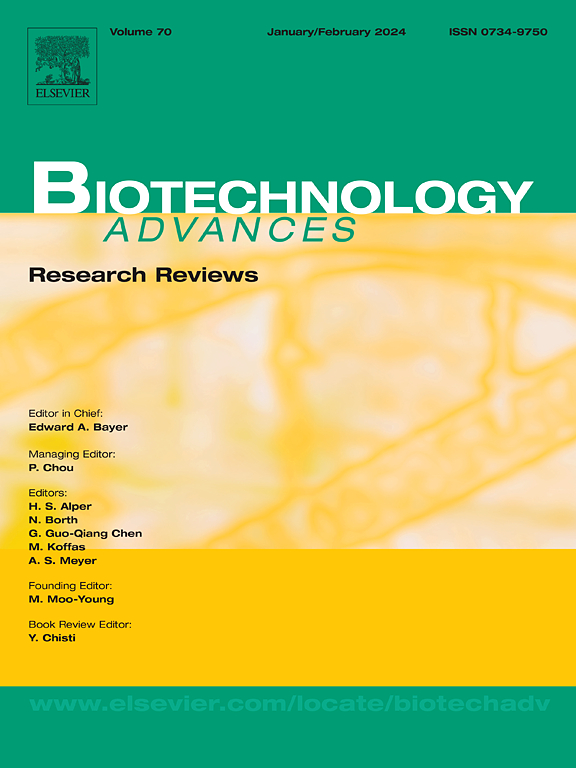A类黄蛋白单加氧酶:检查点和新视野。
IF 12.5
1区 工程技术
Q1 BIOTECHNOLOGY & APPLIED MICROBIOLOGY
引用次数: 0
摘要
黄蛋白单加氧酶(FPMOs)形成了一个广泛的酶超家族,催化多种底物的氧化功能化,在生物催化和可持续化学中起着至关重要的作用。其中,A类酶是研究最广泛的,对其反应机理、立体选择性和底物范围都有很好的了解。然而,由于许多有价值的催化剂尚未被识别和表征,这类酶的全部潜力仍未得到充分开发。在这篇综述中,我们采用结构生物学的方法来提供a类FPMOs当前知识的最新概述。我们首先讨论了整体结构和催化机理。然后,我们对所有已知的酶进行了系统的概述,将它们按生物化学分类为原型酶或非典型酶,并说明了相似的蛋白质支架如何引起明显不同的反应。随后,我们讨论了辅助因子偏好和蛋白质工程方法。最后,我们探索了该领域的未知领域,为发现新的催化剂提供了策略。本文章由计算机程序翻译,如有差异,请以英文原文为准。
Class A flavoprotein monooxygenases: Checkpoint and new horizons
Flavoprotein monooxygenases (FPMOs) form a broad superfamily of enzymes that catalyze the oxyfunctionalization of a wide range of substrates, playing a crucial role in biocatalysis and sustainable chemistry. Among them, Class A enzymes are the most extensively studied, with well-established knowledge of their reaction mechanisms, stereoselectivity, and substrate scope. However, the full potential of this enzyme class remains largely untapped, as many valuable catalysts have yet to be identified and characterized. In this review, we employ a structural biology approach to provide an up-to-date overview of current knowledge on class A FPMOs. We first discuss the overall structure and catalytic mechanism. Then we present a systematic overview of all the known enzymes categorizing them biochemically as either prototypical or atypical and illustrating how similar protein scaffolds can give rise to markedly different reactions. Subsequently we discuss the co-factor preference and the protein engineering approaches. Finally, we explore uncharted areas of this field offering a strategy for discovering new catalysts.
求助全文
通过发布文献求助,成功后即可免费获取论文全文。
去求助
来源期刊

Biotechnology advances
工程技术-生物工程与应用微生物
CiteScore
25.50
自引率
2.50%
发文量
167
审稿时长
37 days
期刊介绍:
Biotechnology Advances is a comprehensive review journal that covers all aspects of the multidisciplinary field of biotechnology. The journal focuses on biotechnology principles and their applications in various industries, agriculture, medicine, environmental concerns, and regulatory issues. It publishes authoritative articles that highlight current developments and future trends in the field of biotechnology. The journal invites submissions of manuscripts that are relevant and appropriate. It targets a wide audience, including scientists, engineers, students, instructors, researchers, practitioners, managers, governments, and other stakeholders in the field. Additionally, special issues are published based on selected presentations from recent relevant conferences in collaboration with the organizations hosting those conferences.
 求助内容:
求助内容: 应助结果提醒方式:
应助结果提醒方式:


